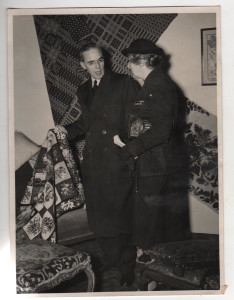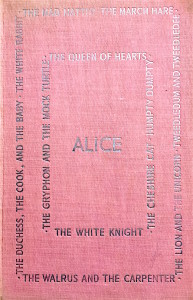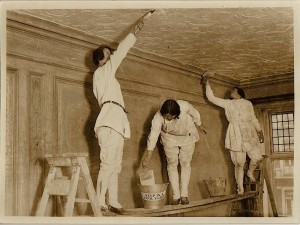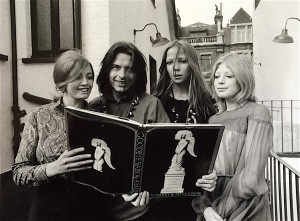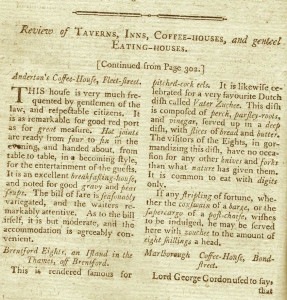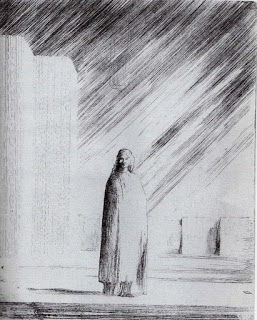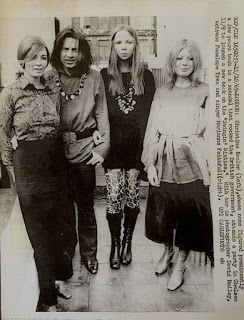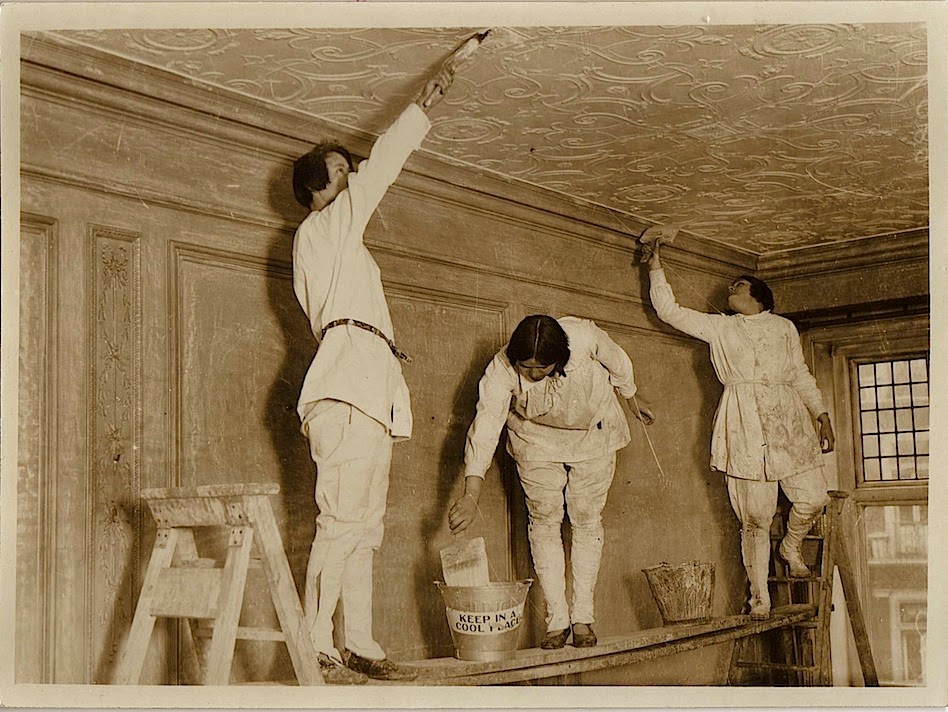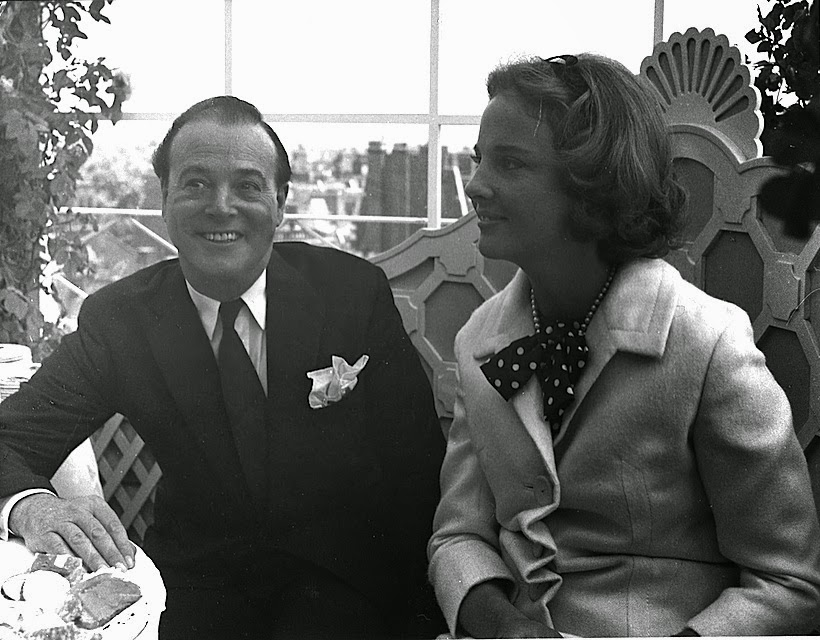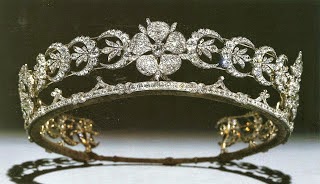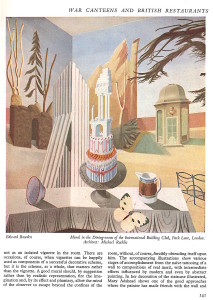 It is a sad fact that most of the best mural paintings executed in canteens, cafes and restaurants in the UK no longer exist. Unlike those executed for some public buildings, those in private premises are subject to the taste of those who take over the property. By far the most notorious example was, of course, the murals executed around 1913 on the walls of Rudolf Stulik’s Restaurant de la Tour Eiffel in Percy Street, just off Tottenham Court Road, by Wyndham Lewis, which were later painted over.
It is a sad fact that most of the best mural paintings executed in canteens, cafes and restaurants in the UK no longer exist. Unlike those executed for some public buildings, those in private premises are subject to the taste of those who take over the property. By far the most notorious example was, of course, the murals executed around 1913 on the walls of Rudolf Stulik’s Restaurant de la Tour Eiffel in Percy Street, just off Tottenham Court Road, by Wyndham Lewis, which were later painted over.
The prevalence of the post-war obsession of interior decorators with the ‘ white wall ‘ was a possible explanation for the disappearance of most the Second World War murals that feature in an article by the architect Oliver Hill in the November 1943 issue of The Studio magazine. Working within the tradition of thirteen centuries of mural painting in English churches, and using the contemporary iconography of posters, notably those of McKnight Kauffer, many of the muralists commissioned during the Second World War were asked to address what was essentially a captive audience –diners at many British restaurants, staff dining rooms and government canteens. Muralists saw these projects as an opportunity to introduce otherwise unappreciative diners to good public art. To the architect Hill, the mural was not the equivalent of a large framed representational painting that focussed the attention of the viewer on itself, but was part of the building on which it was painted. As such, rather than realistic representation, a ‘good mural ‘ should, according to Hill, ‘ fire the imagination and, by its effect and phantasy, allow the mind of the observer to escape beyond the confines of the room, without, of course, forcibly obtruding itself upon him ‘. Continue reading


